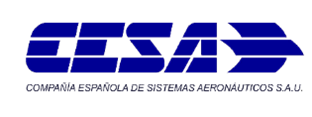CESA coordinates the European project NNEOS (Nacelle cowl NExt generation Opening System) as part of Clean Sky 2 program for R&D activities in the field of “Advanced Engine and Aircraft Configurations”. CESA is developing an innovative nacelle cowl opening system based on electromechanical actuation that will allow complete accessibility to the engine and nacelle components and consequently will help to drastically improve maintainability of the whole system.
The NNEOS concept includes both the electromechanical actuation (EMA) and its Electronic Control Unit (ECU). The system under development will be compact, safe, reliable, and easy to operate and will be able to withstand the harsh environmental conditions required such as the high temperature during flight and maintenance operations.
Temperature constraints are a significant challenge in the development of the NNEOS system, for both the electromechanical actuator and the electronic control unit, which faces the challenge to withstand temperatures as high as 250ºC without degradation of system performance and durability.
Special insulation materials as well as thermal compensation design solutions are being developed to minimize EMA degradation, assure proper lubrication & working clearances between components operating in such an extreme environment.
After discussions with several universities and electric motor suppliers CESA and the University of Canterbury’s Electric Power Engineering Centre (EPECentre) have launched a collaboration to design, build, and test a prototype brushless motor to meet this challenge. The motor resulting from this collaboration will be integrated into the final system together with the other high temperature components and subsystems. The EMA and ECU will undergo a final validation under representative working conditions.
The ECU contains the electronic logic to read the commanded switch position and control the EMA motor accordingly. Although ECU location will be segregated from EMA, working temperature requirements up to 85ºC still apply for electronics design. A sensorless architecture have been selected based on simple hardware and an automatic locking/unlocking sequence has also been developed to minimize human intervention in this critical area of the actuator.
The main function of the NNEOS actuation system is to allow accessibility for maintenance personnel to carry out inspection and repair procedures. Since the operators must work under the Nacelle, this function is considered safety critical as an inadvertent closing of the Nacelle could trap the operator underneath. Therefore, safety and reliability features are key in this development. The main challenges that are being addressed are the reliability of high temperature components as well as assuring redundant load paths to eliminate any single failure point.

